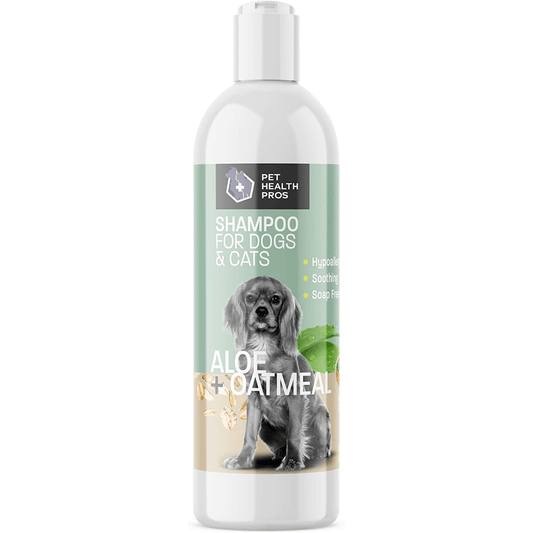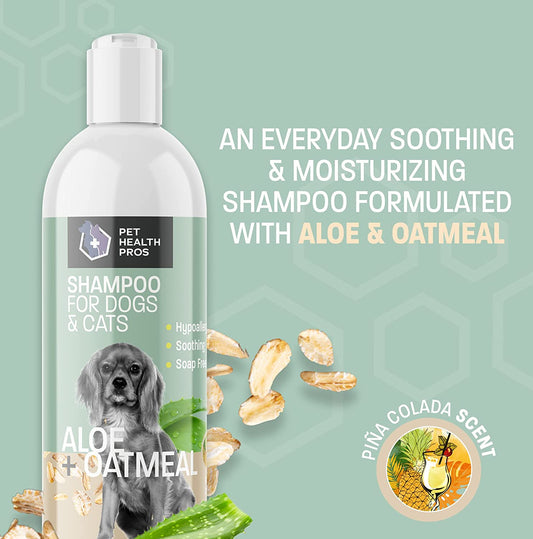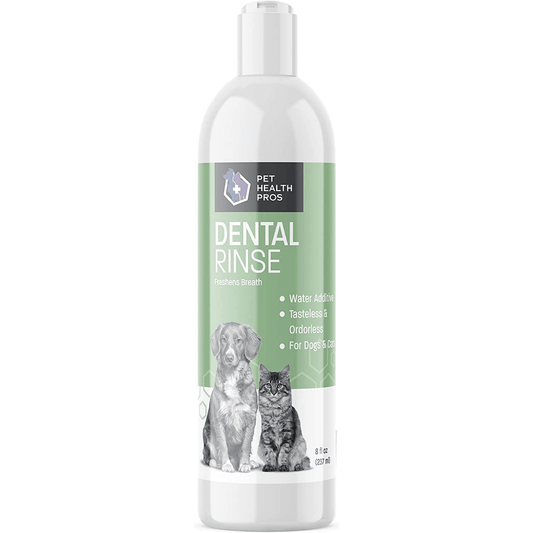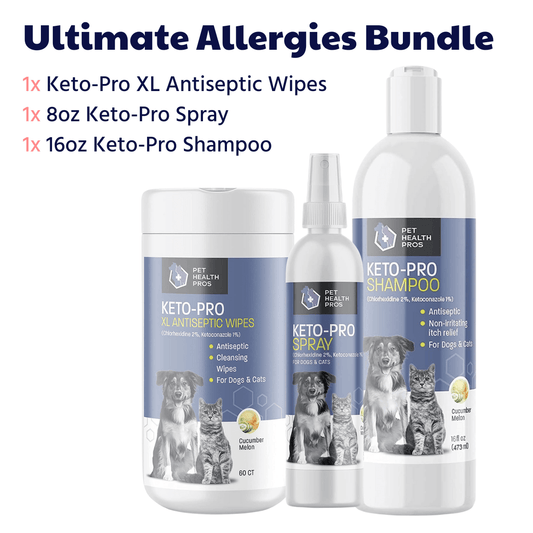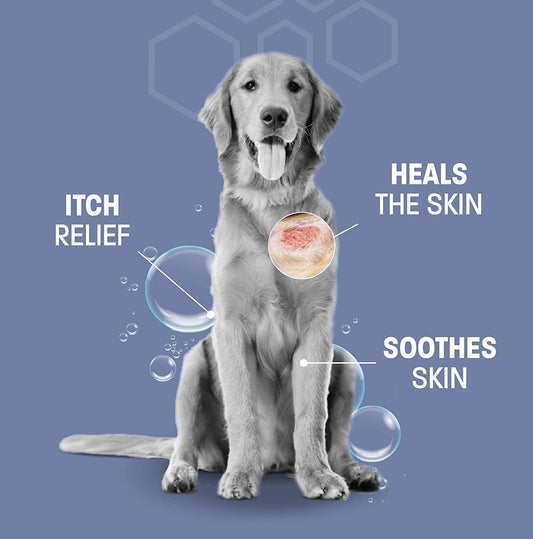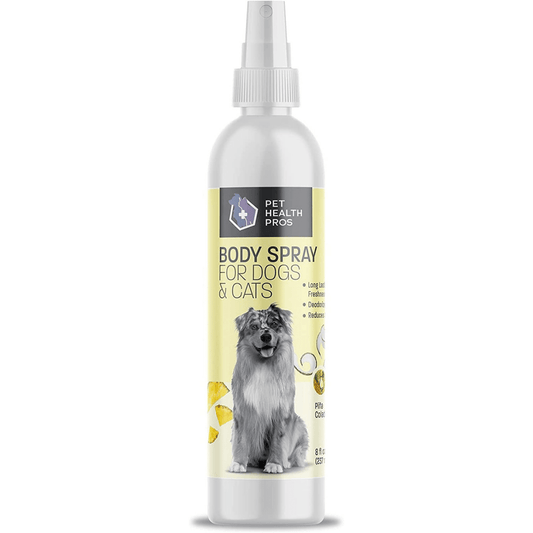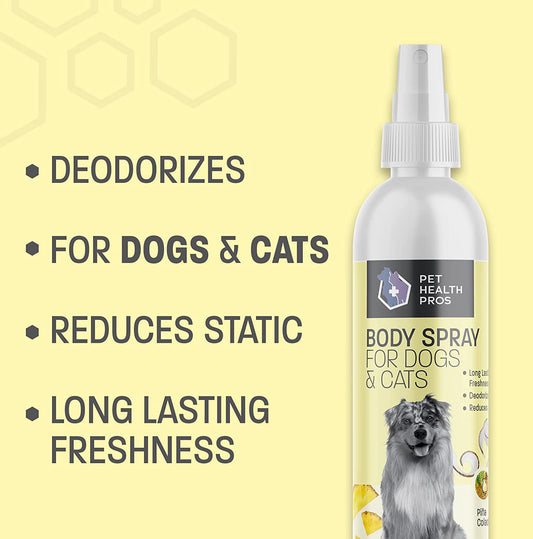Dealing with a dog that loves to chew on furniture can be a real headache. Many pet owners find themselves constantly trying to stop their furry friends from turning their sofas into chew toys. That's where stop dog chewing spray comes in handy. This spray is designed to deter dogs from chewing on things they shouldn't, making it a popular choice for keeping furniture safe. In this guide, we'll cover everything you need to know about using these sprays effectively, from choosing the right product to applying it correctly and even training tips to make sure your dog learns to leave your furniture alone.
Key Takeaways
- Stop dog chewing spray is a helpful tool for protecting furniture from dog bites.
- Choosing the right spray involves checking ingredients and understanding your dog's preferences.
- Proper application is key; follow instructions for best results.
- Training your dog alongside using the spray can enhance effectiveness.
- Always check the spray's safety for pets and test it on a small area of furniture first.
Understanding Stop Dog Chewing Spray
What is Stop Dog Chewing Spray?
Stop dog chewing spray is a specially formulated product designed to deter dogs from chewing on furniture and other household items. These sprays typically have a bitter taste that dogs find unpleasant, which discourages them from continuing to chew. Many pet owners find these sprays to be an effective tool in protecting their belongings from destructive behavior.
How Does Stop Dog Chewing Spray Work?
The active ingredients in most stop dog chewing sprays are non-toxic and safe for pets. When applied to surfaces, the spray leaves a bitter residue that dogs dislike. This unpleasant taste acts as a deterrent, teaching dogs to avoid chewing on the sprayed items. Some sprays also have a scent that is off-putting to dogs, further discouraging them from chewing.
Benefits of Using Stop Dog Chewing Spray
- Protects Your Furniture: By making furniture taste unpleasant, these sprays help prevent damage caused by chewing.
- Safe for Pets: Most sprays are made with non-toxic ingredients, ensuring they are safe for use around pets.
- Easy to Use: Simply spray the product on the areas you want to protect. It's a straightforward and hassle-free solution.
Using stop dog chewing spray can be a quick and effective way to safeguard your home while addressing your dog's chewing habits. However, it's important to combine its use with training and positive reinforcement techniques to ensure long-lasting results. For personalized advice on managing your pet's behavior, consider consulting Pet Genius, an AI-powered pet health assistant that offers tailored support and insights for pet owners.
Choosing the Right Stop Dog Chewing Spray for Your Pet
Factors to Consider When Selecting a Spray
Picking the right stop dog chewing spray isn't just about grabbing the first bottle you see. You need to think about a few things. First off, look at the ingredients. Make sure they're safe for your dog and won't harm your furniture. Some sprays use natural ingredients, while others rely on synthetic compounds. Check if the spray is non-toxic and free from alcohol, which can be harmful to pets.
Next up, consider the effectiveness. Read reviews or ask other pet owners about their experiences. Some sprays might work wonders for some dogs but do nothing for others. It's all about trial and error sometimes. Also, think about the smell. You want something that deters your dog but doesn't stink up your whole house.
Popular Brands and Their Features
There are a bunch of brands out there, each with its own perks. Some well-known ones include Grannick's Bitter Apple, Rocco & Roxie No Chew Spray, and Emmy's Best.
- Grannick's Bitter Apple: Known for its strong bitter taste, this one is a classic choice for many dog owners.
- Rocco & Roxie No Chew Spray: This brand boasts a natural formula, which is a hit among those looking for something gentle yet effective.
- Emmy's Best: Often praised for its long-lasting effect, it’s a favorite for persistent chewers.
Each brand offers something unique, so it's worth reading up on their specific features to see which aligns best with your needs.
Reading Labels and Ingredients
Reading labels might seem tedious, but it's crucial. Look for any potential allergens or irritants that could affect your dog. Ingredients like bitter agents are common, but make sure they're safe. Also, check for any warnings or usage instructions to ensure you're using the product correctly.
Choosing the right spray isn't just about stopping the chewing; it's about ensuring your dog's safety and comfort. Take your time to find a product that fits your pet's needs and your lifestyle. Remember, what works for one dog might not work for another, so patience and persistence are key.
How to Apply Stop Dog Chewing Spray Effectively
Preparing Your Furniture for Application
Before you start using the spray, it's important to get your furniture ready. Dust and clean the surfaces to make sure the spray sticks well. This helps the spray work better and last longer. You might also want to test the spray on a small, hidden area to make sure it doesn't damage or stain the fabric or material.
Step-by-Step Application Guide
Applying the spray is pretty straightforward, but here's a simple guide to make sure you do it right:
- Shake the bottle well to mix the ingredients thoroughly.
- Hold the spray bottle about 6-12 inches away from the furniture.
- Lightly spray the areas where your dog tends to chew. Make sure to cover all the nooks and crannies.
- Let the spray dry completely before allowing your dog near the furniture.
Frequency of Application for Best Results
How often you need to apply the spray depends on a few things, like how determined your dog is and the type of furniture. Generally, it's a good idea to reapply every few days or after cleaning the furniture. Regular application can help reinforce the deterrent effect, making your dog less likely to chew.
Consistency is key when using stop dog chewing spray. It's not just about spraying once and forgetting. Keep an eye on your dog's behavior and adjust your approach as needed. This way, you'll protect your furniture and help your dog learn better habits.
Training Your Dog Alongside Using Chewing Spray
Positive Reinforcement Techniques
When using a stop dog chewing spray, it's important to pair it with positive reinforcement. Rewarding your dog for good behavior is key. Whenever your dog chooses to chew on their toys instead of your furniture, give them a treat or some affection. This helps them understand what behaviors are acceptable. You can use a clicker or simply a cheerful voice to mark the good behavior before giving the reward. The goal is to make your dog associate good behavior with positive outcomes.
Consistency in Training and Spray Use
Consistency is crucial when it comes to training your dog. Make sure you apply the anti-chew spray regularly on the items you want to protect. At the same time, consistently reward your dog for chewing on appropriate objects. This dual approach reinforces the idea that chewing on furniture is unpleasant, while chewing on toys is rewarding. Stick to a routine, and don't be discouraged if progress seems slow at first.
Monitoring Your Dog's Behavior
Keeping an eye on your dog's behavior is essential to ensure the training is effective. Watch for signs that your dog is losing interest in chewing inappropriate items. If you notice your dog going back to old habits, it might be time to reapply the spray or adjust your training methods. Regularly check the areas you’ve sprayed to ensure the deterrent is still effective. If you see any improvement, even small ones, celebrate those wins with your pet.
Training is not just about stopping bad behavior, but also about building a stronger bond with your furry friend. With patience and the right tools, you can guide your dog to better habits.
Safety and Precautions When Using Chewing Spray
Ensuring the Spray is Safe for Pets
When picking out a stop dog chewing spray, it's super important to make sure it's safe for your furry friend. Check the label for any harmful chemicals that could potentially be toxic. Look for sprays that are specifically marked as pet-safe. It's always a good idea to consult with your vet before trying out a new product, especially if your dog has known allergies or sensitivities.
Avoiding Damage to Furniture Surfaces
Before applying the spray, test it on a small, hidden area of your furniture. This helps you see if the spray will cause any discoloration or damage. Some sprays might react differently depending on the material of your furniture, like wood, fabric, or leather. Always follow the instructions on the spray bottle to avoid any mishaps.
What to Do in Case of Allergic Reactions
If your dog shows signs of an allergic reaction, like excessive itching, redness, or swelling, stop using the spray immediately. Wash the affected area with mild soap and water. If symptoms persist, it's best to contact your vet for further guidance. Keep an eye on your dog after the first few applications to ensure they aren't having any adverse reactions.
Using stop dog chewing spray can be an effective way to protect your furniture, but it's crucial to prioritize your pet's safety and comfort. Always monitor your dog's reaction to the spray and make adjustments as necessary.
Alternatives to Stop Dog Chewing Spray
Natural Remedies for Dog Chewing
Sometimes, going natural is the way to go. Apple cider vinegar (ACV) is a popular choice for many pet owners. Its strong scent and unpleasant bitter taste can deter dogs from chewing furniture when sprayed on surfaces. You can learn more about using apple cider vinegar as a deterrent. Another natural remedy is citrus. Dogs generally dislike the smell of citrus fruits like lemons and oranges. Simply rub a peel on the areas your dog tends to chew.
DIY Chewing Deterrent Sprays
If you're into DIY, making your own chewing deterrent spray can be both fun and effective. Here's a simple recipe you can try:
- Mix one part white vinegar with two parts water in a spray bottle.
- Add a few drops of essential oils like lemon or eucalyptus for extra deterrence.
- Shake well before each use and spray on the affected furniture.
This homemade solution is not only cost-effective but also free from harsh chemicals.
When to Consult a Professional Trainer
Sometimes, sprays and home remedies might not cut it. If your dog's chewing habit persists, it might be time to consult a professional trainer. They can offer personalized strategies to curb your dog's chewing behavior. Professional trainers can also help identify if there's an underlying issue, like anxiety, causing the chewing.
Remember, while sprays and deterrents can help, addressing the root cause of your dog's chewing behavior is essential for long-term success.
If your dog is chewing on things they shouldn't, there are other options besides sprays. You can try giving them chew toys or using positive reinforcement to teach them what is okay to chew. For more tips and products to help with your dog's chewing habits, visit our website!
Conclusion
So, there you have it. Using a stop dog chewing spray can be a real lifesaver when it comes to keeping your furniture safe from your pup's teeth. It's not just about spraying and walking away, though. You gotta make sure you're using it right. Test it on a small spot first to avoid any surprises, and always keep an eye on your dog to see how they react. Consistency is key, so stick with it and be patient. With a little effort, you'll find that your furniture stays in one piece, and your dog learns to chew on the right things. It's all about finding that balance between protecting your stuff and keeping your furry friend happy.
Frequently Asked Questions
What is a stop dog chewing spray and how does it work?
A stop dog chewing spray is a special liquid that you spray on things to make them taste bad to dogs. This way, dogs won't want to chew on them. It works because the taste is unpleasant for dogs, so they learn to stay away.
Is stop dog chewing spray safe for my pet?
Most stop dog chewing sprays are safe for pets when used as directed. However, it's important to check the label for any harmful ingredients and follow the instructions carefully.
How often should I apply the chewing spray?
You should apply the chewing spray as often as needed, especially if you see your dog trying to chew on things. Some sprays need to be reapplied every few days, while others might last longer.
Can I use stop dog chewing spray on all types of furniture?
Most sprays can be used on different types of furniture, but it's a good idea to test a small area first. This way, you can make sure it won't damage the material.
What should I do if my dog has an allergic reaction to the spray?
If your dog shows signs of an allergic reaction, like itching or redness, stop using the spray right away and contact your vet for advice.
Are there any natural alternatives to stop dog chewing spray?
Yes, there are natural alternatives like vinegar or citrus sprays that you can make at home. These can also help deter dogs from chewing on things.


